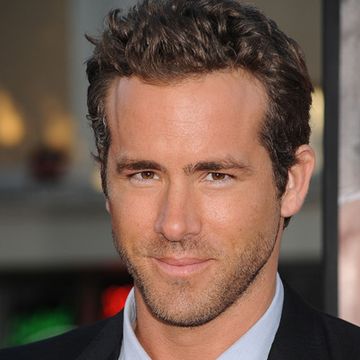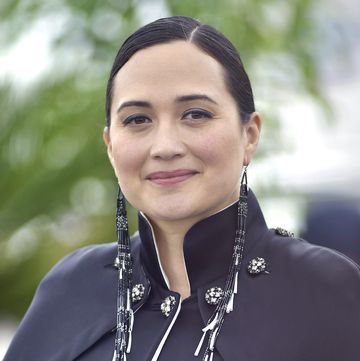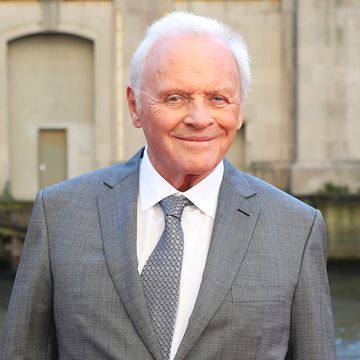(1925-1990)
Who Was Sammy Davis Jr.?
Sammy Davis Jr. overcame prevailing racism to establish himself as an entertainment legend, becoming a successful comedian, actor, dancer and singer. As part of the Rat Pack, with Frank Sinatra and Dean Martin, Davis was known for films like Ocean's 11 and Sergeants 3 along with his partying ways. As his fame grew, his refusal to appear in any clubs that practiced racial segregation led to the integration of several venues in Miami Beach and Las Vegas. A Tony-nominated performer, Davis was also associated with popular recordings like "I've Gotta Be Me" and the No. 1 hit "The Candy Man." He died of throat cancer on May 16, 1990.
Childhood on the Road
Samuel George Davis Jr. was born on December 8, 1925, in the Harlem neighborhood of New York City, with the infant initially raised by his paternal grandmother. Davis's parents split up when he was 3 and he went to live with his father, who was working as an entertainer in a dance troupe. When his father and adopted uncle went on tour, Davis was brought along, and after learning to tap the three began performing together. They would eventually be dubbed the Will Mastin Trio.
Because of the group's itinerant lifestyle, Davis never received a formal education, though his father did occasionally hire tutors while they were on the road. During their travels in the 1930s, the young Davis not only became an accomplished dancer but also a skilled singer, multi-instrumentalist and comedian and was soon the star of the show. Davis also made his first appearance in film during this time, dancing in the 1933 short Rufus Jones for President.
In 1943, at the height of World War II, Davis’s career was interrupted when he was drafted into the Army. During his service, he directly experienced horrendous racial prejudice that his father had previously protected him from. He was constantly harassed and physically abused by white soldiers, with his fellow servicemen breaking his nose. But Davis eventually found refuge in an entertainment regiment, where he discovered that performing allowed him a certain measure of safety and a desire to earn even a hateful audience member's love.
Rising Star
After the war, Davis resumed his showbiz career. He continued to perform with the Will Mastin Trio as the star of the act and also struck out on his own, singing in nightclubs and recording records. His career began to rise to new heights in 1947 when the trio opened for Frank Sinatra (with whom Davis would remain a lifelong friend and collaborator) at the Capitol Theatre in New York. A tour with Mickey Rooney followed, as did a performance that caught the ear of Decca Records, who signed Davis to a recording contract in 1954.
Later that year, while driving to Los Angeles for a soundtrack recording, Davis was seriously injured in a car accident. The accident resulted in his losing an eye, and he would use a glass eye for most of his life. His recuperation also gave him time for deep reflection. He converted to Judaism shortly thereafter, finding commonalities between the oppression experienced by African American and Jewish communities.
Davis’s injury did not slow his ascent. In 1955 his first two albums, Starring Sammy Davis Jr. and Sammy Davis Jr. Sings Just for Lovers, were released to both critical acclaim and commercial success, which in turn led to headlining performances in Las Vegas and New York as well as further appearances in films and on television shows, including Anna Lucasta (1958, with Eartha Kitt), Porgy and Bess (1959, with Dorothy Dandridge and Sidney Poitier) and The Frank Sinatra Show (1958). Around this time Davis made his Broadway debut as well, starring in the 1956 hit musical Mr. Wonderful alongside members of his family and another legendary dancer, Chita Rivera.
The Rat Pack and Beyond
By 1960, Davis was a star in his own right. But he was also a member of the legendary Rat Pack, comprised of Sinatra, Dean Martin, Peter Lawford and Joey Bishop, the hard-partying superstars of the Las Vegas and Los Angeles nightclub scenes. Davis appeared with members of the pack in the films Ocean’s 11 (1960), Sergeants 3 (1962) and Robin and the 7 Hoods (1964). Davis was also a featured player in films outside of the pack, including A Man Called Adam (1966), having the titular role opposite Louis Armstrong. And he was unforgettable in Bob Fosse's Sweet Charity (1969, with Shirley MacLaine), in which Davis appeared as the charismatic, singing and strutting guru Big Daddy.
The iconic performer also released a steady stream of albums on Decca and Reprise. (Davis was the first artist to be signed on the latter label, which was launched by Sinatra.) Davis was nominated for a Record of the Year Grammy for the song “What Kind of Fool Am I?,” which reached the Top 20 of the Billboard pop charts as well. And Davis's live stage work continued to earn him honors, as seen with his Tony Award–nominated performance in the 1964 musical Golden Boy.
In 1966, the entertainer hosted his own short-lived variety series, The Sammy Davis Jr. Show. Years later, he played host again on the syndicated talk show Sammy and Company, from 1975-77.
Social Activism
Despite what appeared to be a free-swinging playboy lifestyle, a lifetime of enduring racial prejudice led Davis to use his fame for political means. During the 1960s he became active in the Civil Rights Movement, participating in the 1963 March on Washington and refusing to perform at racially segregated nightclubs, for which he is credited with helping integrate in Las Vegas and Miami Beach. Davis also challenged the bigotry of the era by marrying Swedish actress May Britt at a time when interracial marriages were forbidden by law in 31 states. (President John F. Kennedy, in fact, requested that the couple not appear at his inauguration so as not to anger white Southerners.)
To the End
Throughout the 1970s and ’80s, the multitalented Davis continued his prolific output. He maintained his musical career, releasing albums well into the late '70s and getting his first #1 chart hit with 1972’s “Candy Man.” Davis appeared in films such as 1981's The Cannonball Run, with Burt Reynolds and Roger Moore, and 1989’s Tap, with Gregory Hines. He was also a guest on a wide variety of television shows, including the Tonight Show, The Carol Burnett Show, All in the Family and The Jeffersons as well as the soap operas General Hospital and One Life to Live. And Davis made another turn on Broadway during the summer of 1978 in Stop the World - I Want to Get Off, though overall some critics were turned off by what they perceived as hammed up appearances.
But while his career continued, with the performer embarking on a lauded tour with Sinatra and Liza Minnelli during the late '80s, Davis’s health began to fade. Davis was a heavy smoker, and in 1989 doctors discovered a tumor in his throat. The fall of that year he gave what would be his final performance, at the Harrah’s casino in Lake Tahoe. Shortly thereafter, Davis underwent radiation therapy. Though the disease appeared to be in remission, it was later discovered to have returned. On May 16, 1990, Sammy Davis Jr. passed away at his home in Beverly Hills, California, at the age of 64. Before his death, he was honored by an array of his peers at a February television tribute.
Personal Life and Biographies
Davis was seriously involved with bombshell actress Kim Novak in the 1950s, though their union faced much harassment due to the racial climate of the day. Davis was ultimately married three times, first briefly to singer Loray White, then to Britt in 1960, with the two having a biological daughter and two adopted sons. The couple divorced by the end of the decade and Davis remarried in 1970 to dancer Altovise Gore, who remained with him until his passing. They adopted another son as well.
With the harshness of his early years not to be underestimated, Davis struggled throughout much of his life with addictions, succumbing to alcohol and drug abuse after his split with Britt and having a major gambling problem that ate up millions of dollars.
The entertainer published the well-known 1965 autobiography Yes I Can: The Story of Sammy Davis Jr. followed by Why Me? in 1980. Another autobiography, Sammy, was released posthumously in 2000, while the comprehensive Wil Haygood biography In Black and White: The Life of Sammy Davis Jr. was published in 2003.
QUICK FACTS
- Name: Sammy Davis
- Birth Year: 1925
- Birth date: December 8, 1925
- Birth State: New York
- Birth City: New York City
- Birth Country: United States
- Gender: Male
- Best Known For: Sammy Davis Jr. was a highly popular actor, comedian, singer and dancer. He was also part of the Rat Pack with Frank Sinatra and Dean Martin, with whom he starred in several films.
- Industries
- Theater and Dance
- Television
- Film
- Astrological Sign: Sagittarius
- Death Year: 1990
- Death date: May 16, 1990
- Death State: California
- Death City: Beverly Hills
- Death Country: United States
Fact Check
We strive for accuracy and fairness.If you see something that doesn't look right,contact us!
CITATION INFORMATION
- Article Title: Sammy Davis Jr. Biography
- Author: Biography.com Editors
- Website Name: The Biography.com website
- Url: https://www.biography.com/actors/sammy-davis-jr
- Access Date:
- Publisher: A&E; Television Networks
- Last Updated: April 20, 2021
- Original Published Date: April 3, 2014
QUOTES
- Being a star has made it possible for me to get insulted in places where the average Negro could never hope to get insulted.
- Nobody likes me but the people. Though I have been treated extremely well overall by the critics, I have never been a critic’s favorite. But the people always had faith in me, and they were supportive of me…. They laugh. They have good times, and they come backstage. It’s a joy.












